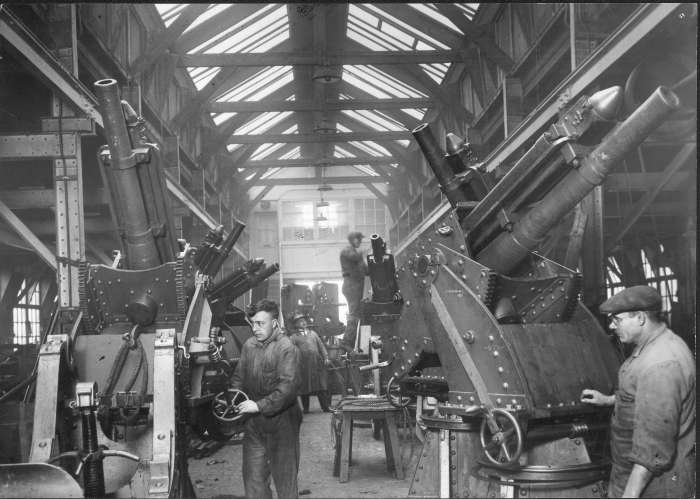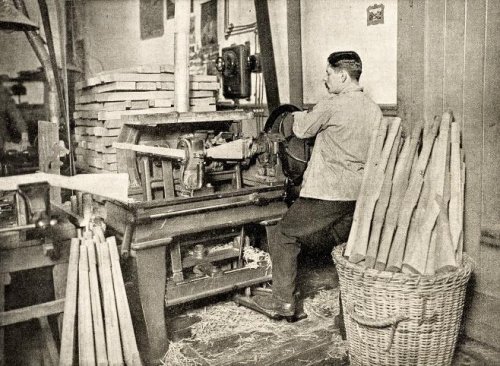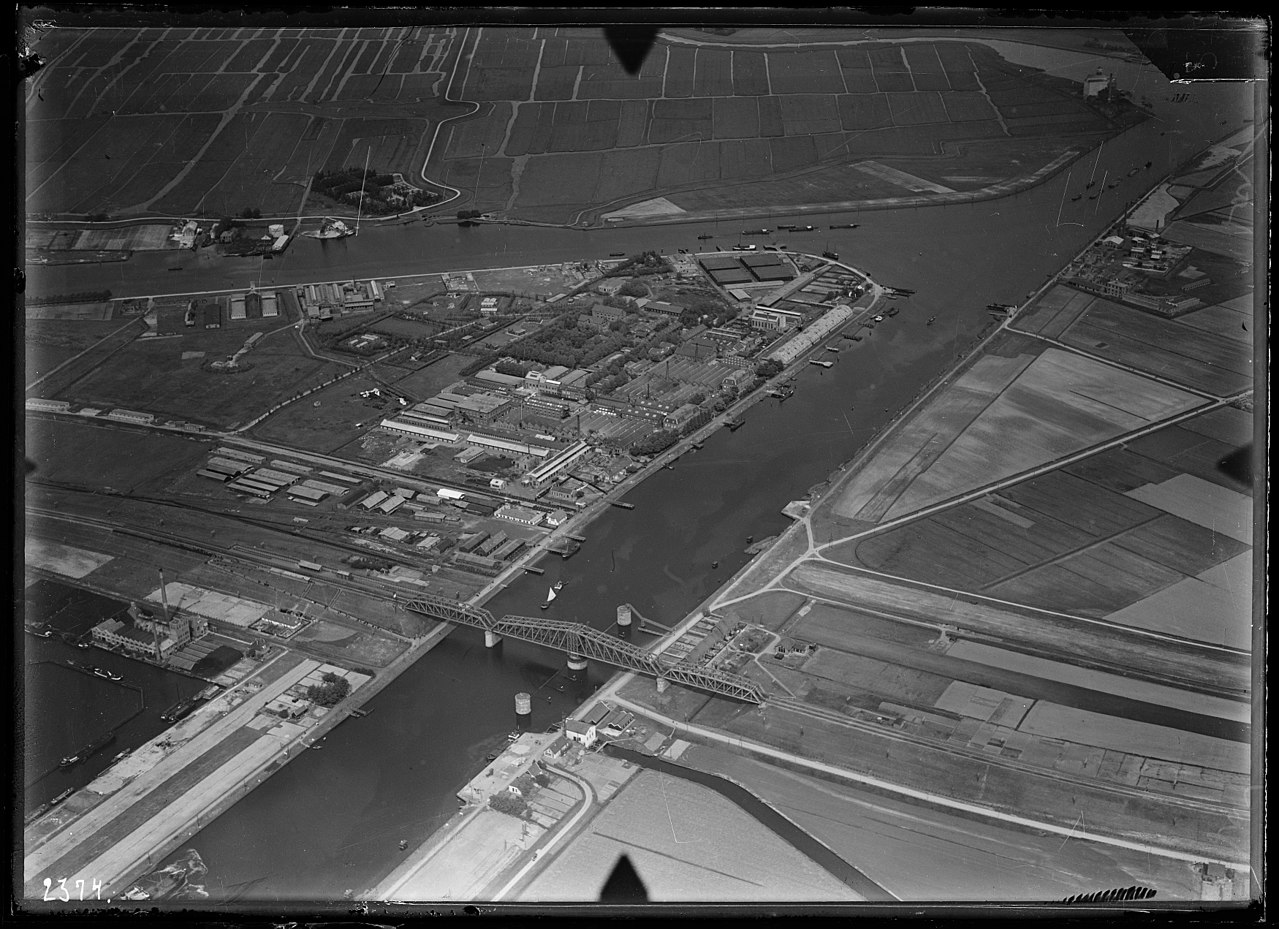Artillerie-Inrichtingen was a Dutch state-owned artillery, small arms, and munitions company which also produced machine tools and was founded in 1679 in Delft, Netherlands.
The Delft Company
In the period of peace between Waterloo in 1815 and the Belgian Revolution of 1830, the Delft company developed rapidly. By 1813, the company was already utilizing steam power and producing artillery, field guns, small arms and military vehicles. Other products were manufactured in facilities located in Liège, but this ended after 1830 when the Belgian Revolution geographically split off these facilities, leaving the company’s production entirely in Delft. Again, a reorganization was undertaken and non-core tasks such as woodworking were rejected. The company focused its efforts on metalworking under the leadership of Colonel Ultich Huguenin (1755-1833). The company began to manufacture small arms and ammunition as well, while continuing to produce machinery and precision instruments. Because it was also a mining plant, lathes were required for the machining of artillery munitions and the like. Their manufacture of precision instruments required custom machines and, by 1836, the company was producing lathes for their own use. By about 1850 there were 500 people in the company. The quality of production was high.
In 1860 a pyrotechnic plant was set up for the manufacture of explosives. About 1880, the company consisted of a logistics center, a pyrotechnic school, a foundry, a workshop, a saddlery, a woodworking center, a gun shop, and a pattern factory. In 1884, the company introduced a small foundry for cast steel, which was the first industrial scale steel production in the Netherlands. With this addition, the company began using cast steel for the production of war materiels which were previously manufactured from cast iron or wrought iron.
The Hembrug Company



Rifle stock production. Zaandam, Netherlands, 1912.
In 1887 the company was renamed Artillerie Inrichtingen (A.I.).From this point, all production was no longer centered in Delft because the Hague Grove Geschut Gieterij was also included in the company. As the company’s existing facilities had no space left to expand, a new site was sought. However, this search was limited to the territory within the defenses of The Stelling van Amsterdam. The company chose a new base of operations near Zaandam, where there were already some naval pilots.
In 1899, Artillerie Inrichtingen moved to the Hemelveld on the Noordzeekanaal near Zaandam. The Hague shuttles were closed in 1904 and the services moved to Zaandam. In 1907, a gangway bridge was opened over the canal called Hembrug. Eventually the name of the bridge would pass on the company.
In 1912, Artillerie Inrichtingen was re-designated as a state-owned company, and was thereby withdrawn from the direct military authority. At this time, the company employed some 1200 people, including many soldiers. Most of its production was then going to the Dutch East Indies to suppress rebellions of the indigenous peoples, such as those the Aceh Wars.
After the outbreak of the First World War, production and staff increased quickly, reaching a height of 8500 people in 1917. Arms production increased by the large orders for the Dutch army. After the end of the war, the country entered a period of disarmament with the establishment of the League of Nations. The number of employees fell to less than 2000 in 1921 and closure of the company was considered. As an alternative, automobiles were assembled and converted. The company also employed 200 drivers delivered mail, until this function was transferred to the “Mailies” of the Dutch National Postal Service in 1930.
In 1928, the organizational form of the company was changed to that of a public limited company which allowed for greater freedom of business management. The largest customer was still the KNIL, and the number of employees slowly recovered, before later falling back to 1200 in 1932 during the Depression, despite an increasing demand for the company’s civilian production, including lathes. The German re-armament of the 1930s also led to increases in production. In 1940, a plan was put in place to deny the NAZIs use of Artillerie Inrichtingen’s facilities, but this plan was not implemented before The Invasion.
1973 Split
In 1973 the Dutch government divided the company into two independent parts: Eurometaal, and Hembrug Machine Tools. Eurometaal took the company’s military production facilities including those for arms and armaments, while Hembrug took the precision tool manufacturing. In 1983, the privatization of Hembrug followed the company moving to the Figeeweg in the Waarderpolder in Haarlem. Hembrug went on to develop ultra-precision lathes. Eurometaal also sought to target the civil market and manufactured parts for cars, forklifts, milking robots, high-precision precision tools, light commercials, sailboats, and durable locks. It also developed a press for the production of coins for the Dutch Mint, which struck guilders and later euro coins. A unique technical event was the acquisition of a 3000-ton soil pump, which was the largest in Europe in terms of capacity and stroke length.
Acquisition and repatriation
Eurometaal was eventually taken over by the German Rheinmetall and stopped production in 2003. The Eurometaal subsidiary at Bergen op Zoom, called Franerex, was also closed in 2003. Companies in Eurometaal Holding including Intergas at Coevorden and the German Heidel, which worked for the automotive industry, were rejected for a social plan for the last 200 employees. In the old mansion workshop at Zaandam, the Tetrix training center was established in the old Artillerie Inrichtingen masonry pattern factory, founded in 1939. They left the site in 2012.
Production in the Hembrug area declined through the 1970s until the train stop serving it shut down in 1982. The old Artillerie Inrichtingen Hembrug factories fell into disuse. In 1983, the Hembrug Bridge, for which the area was named, was made obsolete by the Hemtunnel, then torn down in 1985. The former munitions factories were replaced by Eurometaal, then Rhinemetall facilities. As of 2017, the Hembrug Machine Tools company still makes precision lathes including the Mikroturn line in Haarlem. There are still a large number of industrial manufacturing plants in the Hembrug area, and the area is considered as an important industrial monument. On the site of the old Artillerie Inrichtingen Hemburg factories, the Hembrug Museum is furnished to provide information about the past, present and future of its activities.
2021 – Present
A new team of Gun and defense entepreneurs registered the names and trademarks:
– A.I. Armaments
– AI Armament
– Nederlandse Machinefabriek Artillerie Inrichtingen
– Artillerie Inrichtingen Armaments B.V
The result will be a complete cradle to cradle concept, from design, engineering, manufacturing. commissioning & demilitarization in a circular way.



